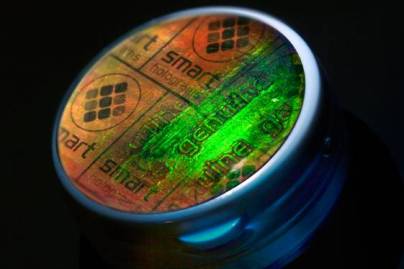Smart holograms help self-diagnosis for patients4 February 2008 Patients with chronic diseases such as diabetes, cardiac problems, kidney disorders or high blood pressure could benefit from the development of sensors made from a new type of hologram. The hologram sensors could be designed to detect a wide range of changes in the body's physiological conditions, for example continuous monitoring of blood-glucose level for diabetics, and should make self-diagnosis much simpler, cheaper and more reliable, say Professor Chris Lowe and Cynthia Larbey in an article in Physics World.
Traditional holograms, like those on a credit card, are stored on photo-sensitive materials and remain unchanged with time. These holograms are widely used in authentication tags to deter copying, and on credit cards, passports, and banknotes. They also underpin the technology of supermarket scanners and CD players. Smart holograms, however, use materials called hydrogels that shrink or swell in response to local environmental conditions. Such holograms can therefore be used as sensors to detect chemical changes. Smart Holograms, a spin-out company from the Institute of Biotechnology at Cambridge University, has already developed a hand-held syringe to measure water content in aviation fuel tanks — necessary because aeroplane engines are liable to freeze mid-air if there are more than 30 parts of water per million of fuel. The same ability to detect chemical imbalances could be used by diabetics to check their blood-sugar levels; by patients with kidney disorders to check on adrenaline levels; by security forces to detect chemicals like anthrax after a terrorist attack; or, less urgently but with wide applicability, by glazing firms to detect whether water has crept in between window panes — something that can cause long-term structural damage. As Chris Lowe and Cynthia Larbey write in an article in Physics World, “Visual images produced by smart holograms can be made to appear or disappear under appropriate chemical or biological stimuli, which makes them ideal for use in breathalysers, monitoring heart conditions and for various security and smart-packaging systems.” The full article is available at: http://physicsworld.com/cws/article/print/32689 |
